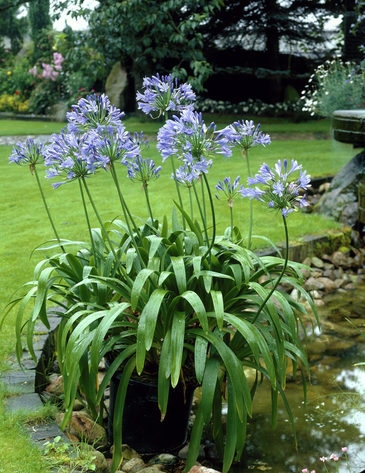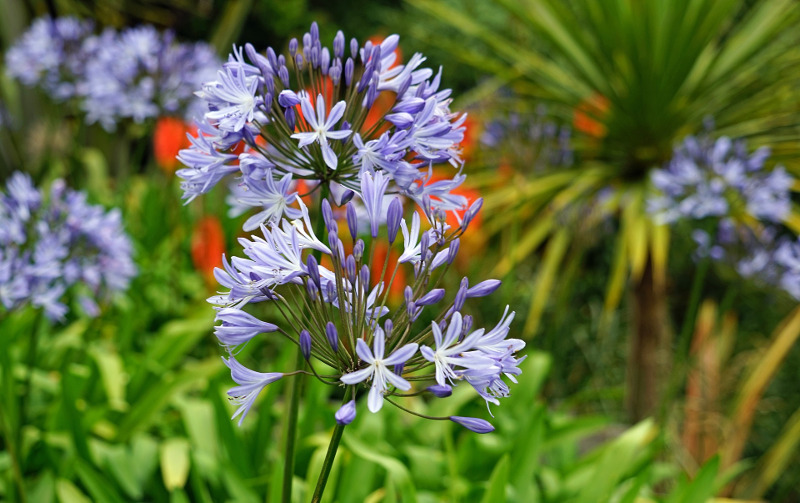Growing Agapanthus: A Full Overview to Beautiful Blooms
Growing Agapanthus: A Full Overview to Beautiful Blooms
Blog Article
Letting Loose the Secret to Effective Agapanthus Cultivation: Tips and Tricks for a Flourishing Garden
In the realm of gardening, cultivating agapanthus effectively needs a calculated strategy that incorporates different aspects of plant treatment. With cautious attention to information, one can open the secrets to nurturing these stunning blooms, leading to a garden that prospers with appeal and vibrancy. By comprehending the subtleties of agapanthus cultivation, one can develop a setting where these plants prosper and grow generously. In the following conversation, we will explore essential pointers and methods that will lead you towards a flourishing agapanthus garden, supplying understandings right into ideal techniques, dirt conditions, watering methods, and extra.
Growing Agapanthus: Finest Practices
When planting Agapanthus, appropriate soil preparation is crucial for guaranteeing effective development and development of these attractive flowers. Agapanthus, commonly referred to as Lily of the Nile or African lily, flourishes in well-draining dirt with a slightly acidic to neutral pH degree - Agapanthus. Before planting, it is crucial to change hefty clay dirts with natural matter such as garden compost or peat moss to enhance water drainage and offer crucial nutrients for the plants
To plant Agapanthus, pick a location that gets complete sunlight to partial color, as this will certainly promote healthy and balanced growth and plentiful blooming. Dig a hole twice the size of the plant's origin ball and put the Agapanthus at the same depth it was formerly expanding. Gently backfill the opening with dirt, pressing down securely to get rid of any air pockets around the roots.
Water the freshly grown Agapanthus thoroughly and remain to maintain the dirt evenly damp, particularly throughout the plant's energetic growing season. Agapanthus. Using a well balanced fertilizer once a month can even more support the plant's development and blooming. By adhering to these best methods for growing Agapanthus, you can develop a stunning display of these fascinating blossoms in your yard
Perfect Dirt Conditions for Agapanthus
For optimal growth and flowering success of Agapanthus plants, making sure the dirt problems are excellent is crucial. Agapanthus grows in well-draining dirt with a slightly acidic to neutral pH level ranging from 6.0 to 7.0. This sort of dirt enables appropriate water drain, preventing waterlogging which can cause root rot. To enhance soil water drainage, consider including organic issue such as garden compost or peat moss when preparing the planting site. In addition, Agapanthus favors dirt that is rich in nutrients, so including a well balanced fertilizer during the expanding season can promote healthy and balanced growth and vibrant blossoms.

Watering and Feeding Tips
To ensure healthy development and lively flowers, appropriate watering and feeding strategies are crucial for effective Agapanthus cultivation. Agapanthus plants take advantage of regular watering, especially during the growing season. It is recommended to water deeply as soon as a week, making certain the dirt is damp however not soaked. During heat or in pots, more constant watering might be needed to avoid the soil from drying entirely.
When it pertains to fertilizing Agapanthus, a well balanced plant food with equal components nitrogen, phosphorus, and potassium can be applied in the spring to promote healthy development and flowering. Slow-release plant foods are optimal for providing nutrients gradually over an extensive period. Stay clear of over-fertilizing, as this can cause try this web-site excessive vegetation growth at the expenditure of blooms.
Furthermore, including raw material like garden compost into the dirt can enhance nutrient degrees and improve soil framework, helping in the total health and wellness of the Agapanthus plants. By adhering to these watering and fertilizing tips, gardeners can guarantee their Agapanthus plants flourish and generate spectacular display screens of flowers.
Trimming and Deadheading Techniques
Appropriate trimming and deadheading techniques play a critical function in keeping the health and wellness and aesthetics of Agapanthus plants, enhancing the vital techniques of watering and fertilizing for successful farming. Trimming Agapanthus involves removing invested flower heads, dead or yellowing fallen leaves, and overall shaping of the plant to advertise much better development. Deadheading, the procedure of removing faded blossoms, not just boosts the plant's appearance however additionally urges further blooming.
When deadheading Agapanthus, it is a good idea to trim off the blossom stem at the base using sharp, clean shears. This process redirects the plant's power from seed manufacturing back right into root and vegetation growth, promoting a healthier and more robust plant. Routine deadheading can prolong the growing period of Agapanthus and avoid self-seeding, which can cause congestion.
In regards to trimming, Agapanthus normally gain from a light trim after blooming to clean the plant and encourage fresh development. Reducing back the invested blossom stems and eliminating any type of damaged or dead foliage assists preserve the plant's vitality and overall look. Nevertheless, it is necessary to avoid reducing right into the crown of the plant, as this can deteriorate its health and wellness.

Protecting Agapanthus From Pests and Diseases
Applying effective bug and disease monitoring methods is essential to protecting the health and vigor of Agapanthus plants in growing. Agapanthus are typically hardy plants, yet they can still succumb to various parasites and illness if not effectively taken care of. One usual bug that affects Agapanthus is the Agapanthus borer, a caterpillar that passages into the plant, triggering damage to the blossoms and leaves. To stop infestations, normal evaluation of the plants is essential. If borers are found, they can be manually eliminated, or insecticidal soap can be used as a control procedure.
Along with parasites, Agapanthus are at risk to diseases such as root rot and fungal leaf areas. These problems can often be avoided by guaranteeing correct drain and staying clear of overwatering. Influenced components of the plant should be quickly eliminated to stop further spread if signs of illness show up. Fungicides might additionally be have a peek at these guys made use of as a therapy action, following the manufacturer's instructions very carefully. By remaining attentive and resolving parasite and condition concerns without delay, garden enthusiasts can aid their Agapanthus grow and prosper.

Verdict
To conclude, successful farming of agapanthus needs proper growing methods, ideal dirt conditions, ample watering and fertilizing, normal pruning and deadheading, and defense from bugs and diseases. By adhering to these suggestions and methods, gardeners can make certain a growing yard full of lovely agapanthus flowers. Agapanthus. Remember to preserve regular care and interest to information to promote the wellness and longevity of these sensational plants
When growing Agapanthus, proper dirt prep work is vital for making certain successful growth and growth of these beautiful blossoms.Water the newly planted Agapanthus thoroughly and continue to keep the dirt equally moist, particularly throughout the visit plant's energetic growing season.For optimal growth and blooming success of Agapanthus plants, ensuring the soil conditions are perfect is essential. When hair transplanting or planting Agapanthus, ensure the dirt is well-prepared to give the required structure for the plants to develop themselves successfully. One typical bug that impacts Agapanthus is the Agapanthus borer, a caterpillar that passages right into the plant, triggering damage to the leaves and flowers.
Report this page